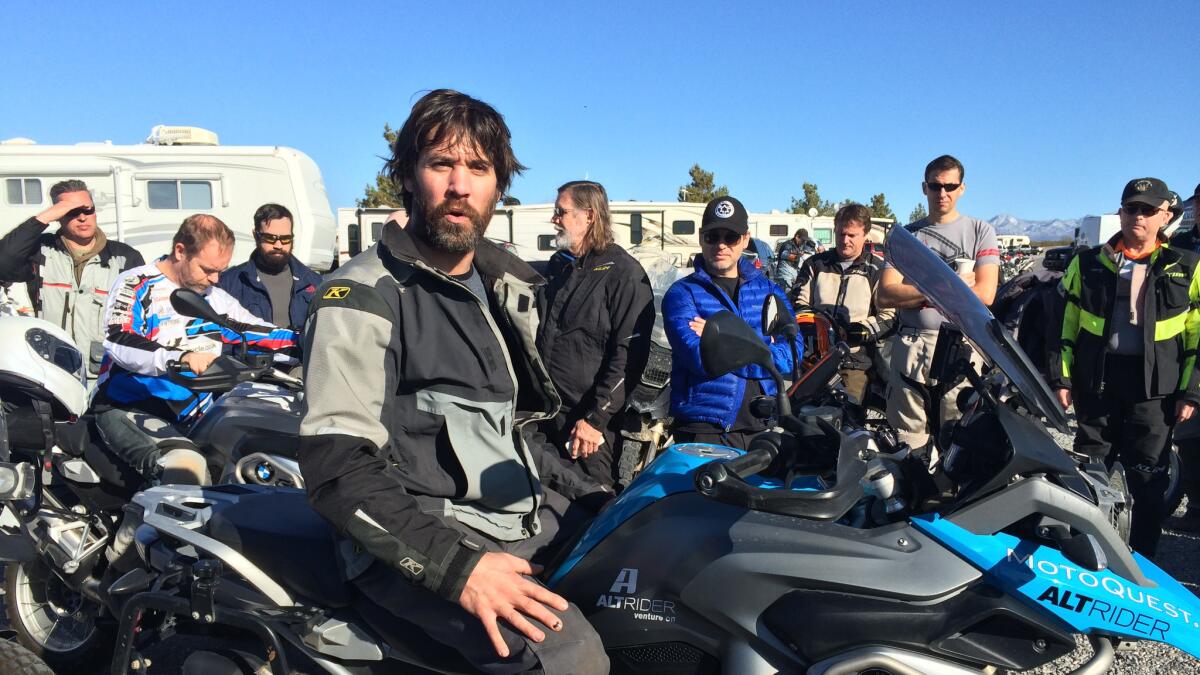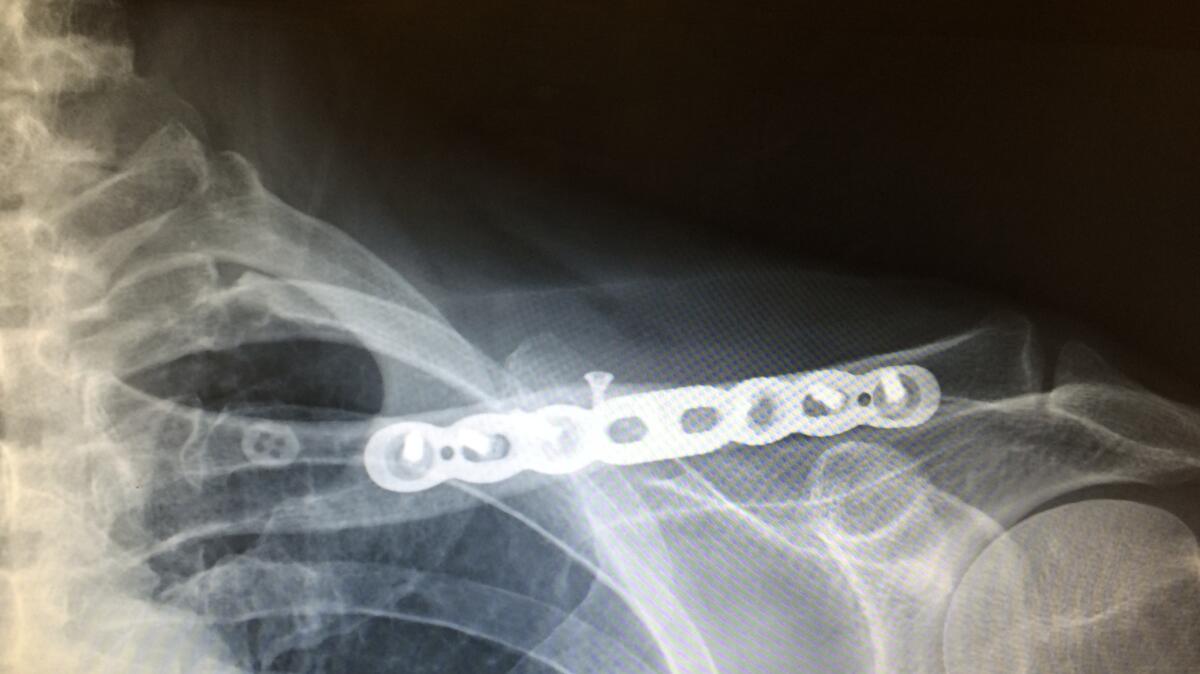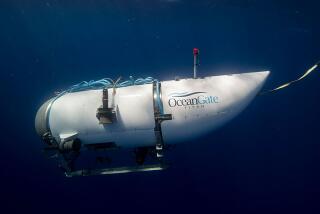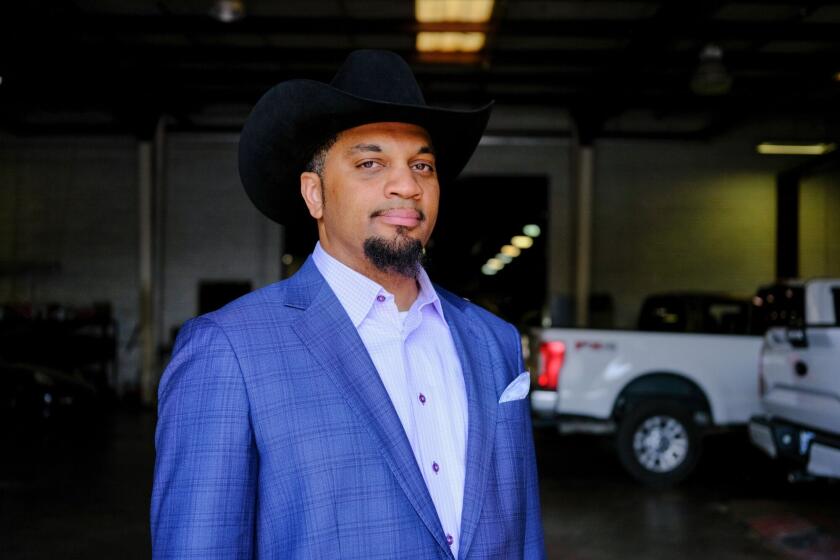Motorcycle adventure riding: Not for the faint of heart

- Share via
Motorcycling can be a dangerous activity. Adventure riding is a little more so.
I should know. After more than 40 years of off-road motorcycling without a serious injury or broken bone, I went down hard in the desert this spring — and couldn’t get up.
The fall occurred halfway through an all-day ride organized by Jeremy LeBreton and his AltRider team in Pahrump, Nev. The “Taste of Dakar” ride was a weekend of training, product display and fellowship meant to introduce adventure riders to the greatest adventure ride of them all, the Dakar Rally off-road race that happens annually in South America.
The weekend started promisingly. I rode part of Friday, getting accustomed to a BMW F800GS that the tour and motorcycle rental company MotoQuest had provided.
But Saturday morning, things turned bad. An hour into the ride, I hit a ditch that had been hiding under a bush. The bike stopped. I didn’t. I went over the handlebars in classic “Flying W” form and came up with a tweaked neck, abrasions on my left side and a fair amount of skin removed from the back of my left wrist.

I rode on. An hour later, going about 25 miles an hour up a slight grade dotted with grapefruit-sized rocks, the front end of the bike washed out and I went over — again on my left side. It was clear to me on impact that I was no longer whole.
Dakar veteran Simon Pavey was riding with my group. He saw the fall, and was at my side about the time I got up.
“Are you all right?” he asked.
“I’m afraid not,” I said, and pointed at my shoulder.
“Oh yeah,” he said. “You’re done.”
Pavey, who helped train Ewan McGregor and Charley Boorman for their “Long Way Round” epic, had a similar fall during one of his 10 Dakar attempts — he finished seven of them — and broke his collarbone. He knew what he was looking at. He said he was sorry he didn’t have any morphine in his Camelback.
Because AltRider had organized the weekend well, the group was equipped with a satellite phone. So LeBreton was able to call for a truck to help get me to a hospital.
But we were several miles from any navigable road, and it was clear I couldn’t ride without doing more damage to myself. So LeBreton and a couple of other riders went off in search of someone else that could get me off the trail.
About an hour after my fall, a couple of rock hounds in a Jeep Wrangler came slowly up the canyon below us. They offered to carry me up to the road to meet the truck.
It was slow going. I was in a lot of pain, and the bumpy trail made for a rough ride. It took an hour to get to the road. Then it took a couple more to get down a series of dirt roads to a paved highway — and another two hours to get from there to a hospital.
Mine wasn’t the only injury that day, nor the only broken bone. I found out in the emergency room that another rider had fallen, breaking his collarbone exactly as I had.
It was almost six hours from the fall to the ER and my initial consult with an emergency room doctor. He confirmed the broken collarbone, gave me some pain medication, and told me to try to get back to Los Angeles and see a surgeon.
One surgery, one titanium plate, eight screws and four months later, I had recovered enough to go adventure riding again.
I was lucky. Had the fall involved a head injury, or a compound fracture, or internal injuries, I would have required a helicopter evacuation and might not have made it.
As LeBreton said: “You really got a taste of Dakar.”
Twitter: @misterfleming
MORE FROM AUTOS
2016 Africa Twin: Finally, a new ADV bike from Honda
Motorcycle companies cash in on the adventure riding boom
Motorcycle adventure riding: Not for the faint of heart







